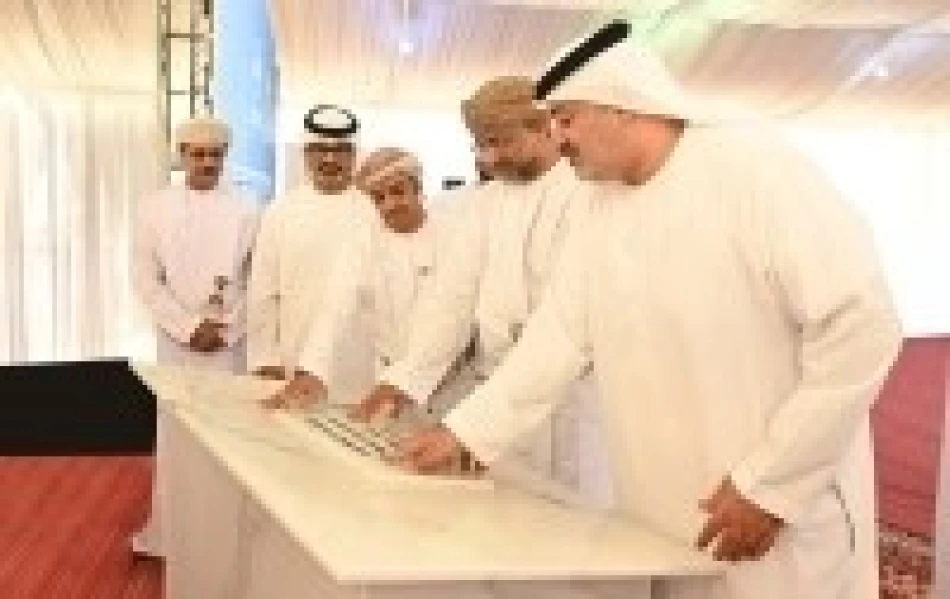
Abu Dhabi Development Fund Lays Foundation for Salalah Investment Project
UAE-Oman Tourism Partnership Takes Shape with $208 Million Salalah Resort Development
The Abu Dhabi Fund for Development has broken ground on a major integrated tourism complex in Oman's Salalah, marking a strategic $208 million investment that underscores the Gulf's push toward economic diversification beyond oil. The project represents more than just another resort—it's a calculated bet on transforming southern Oman into a regional tourism hub while strengthening UAE-Oman economic ties.
A Massive Development with Regional Ambitions
Spanning 2.5 million square meters in Dhofar province, this tourism complex aims to position Salalah as a serious competitor to established Gulf destinations like Dubai and Doha. The first phase alone covers 604,000 square meters and includes a luxury resort with 124 hotel units, a tourist marina, waterfront rehabilitation, and comprehensive infrastructure development.
The scale suggests ambitions beyond typical resort development. By creating an integrated tourism ecosystem—combining accommodation, marina facilities, and upgraded coastal infrastructure—the project mirrors successful models seen in the UAE's own tourism transformation over the past two decades.
Strategic Timing Amid Gulf Tourism Boom
This investment comes as Gulf states aggressively diversify their economies ahead of the post-oil era. Oman's Vision 2040 specifically targets tourism as a key pillar of economic diversification, particularly in naturally rich areas like Dhofar province. The timing aligns with broader regional trends: Saudi Arabia's NEOM project, Qatar's post-World Cup tourism push, and the UAE's continued expansion of its hospitality sector.
Salalah offers unique advantages in this competitive landscape. Unlike the desert attractions of most Gulf destinations, it provides monsoon-fed greenery, cooler temperatures, and distinct cultural heritage—potentially appealing to both regional visitors seeking respite from harsh summers and international tourists looking for authentic Arabian experiences.
Economic Impact Beyond Tourism Revenue
According to Azzan Al Busaidi, Oman's Undersecretary for Tourism, the project will create hundreds of direct and indirect jobs while supporting small and medium enterprises. More significantly, it includes training programs for Omani citizens in hospitality and tourism—addressing a critical skills gap that has historically limited the sector's growth.
This focus on local capacity building reflects lessons learned from other Gulf tourism developments, where over-reliance on expatriate workers limited long-term economic benefits for local populations. The emphasis on involving local businesses and training nationals suggests a more sustainable development model.
Strengthening UAE-Oman Economic Integration
The project extends decades of UAE-Oman cooperation, but represents a shift toward more sophisticated economic integration. Rather than traditional trade relationships, this involves UAE capital directly developing Omani tourism infrastructure—creating shared interests in the sector's success.
For the UAE, investing in Oman's tourism development makes strategic sense. It extends the UAE's hospitality expertise and capital to a complementary market while strengthening ties with a crucial neighbor. For Oman, it provides access to UAE's proven tourism development capabilities and marketing networks.
Market Implications and Regional Competition
This development signals intensifying competition in Gulf tourism markets. While established players like Dubai and Doha focus on luxury and business travel, Salalah's natural advantages could carve out a distinct niche in eco-tourism and cultural experiences.
The project's success will likely influence similar cross-border tourism investments across the Gulf. If Salalah can successfully position itself as a regional destination, it could demonstrate a model for smaller Gulf states to leverage their unique assets while benefiting from neighbors' capital and expertise.
The real test will be execution and marketing. Gulf tourism markets are increasingly sophisticated, and success requires more than impressive infrastructure—it demands authentic experiences, efficient operations, and strategic positioning in an crowded regional market.
 Layla Al Mansoori
Layla Al Mansoori







